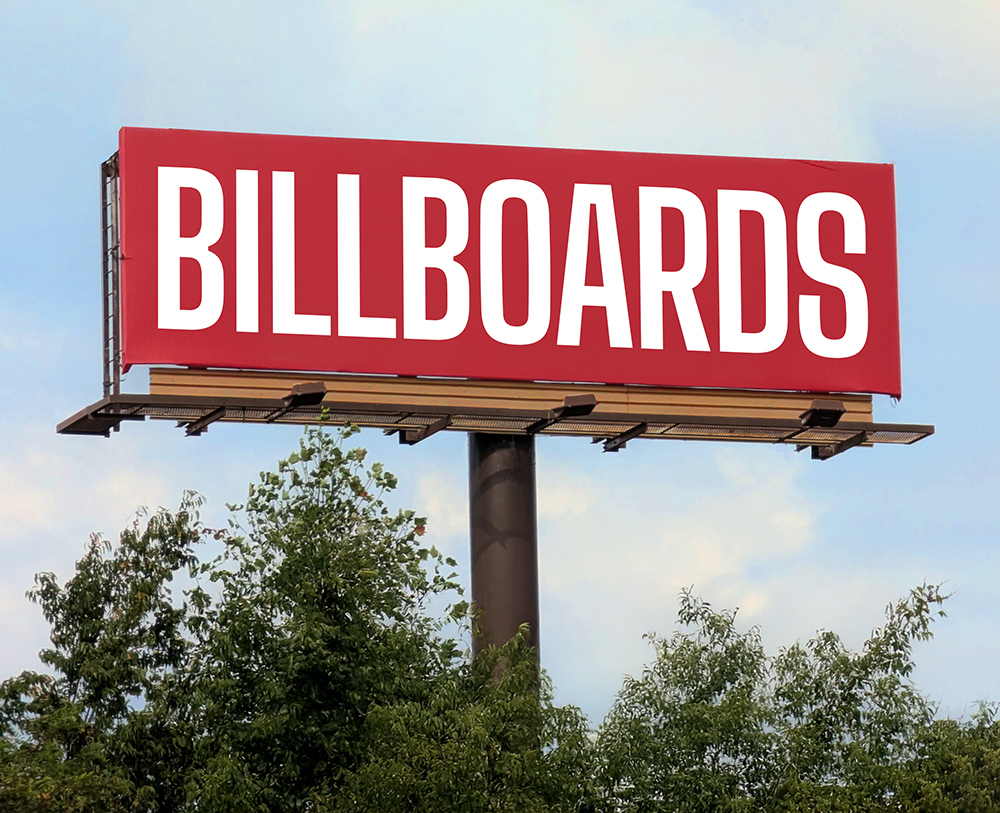What’s in a Billboard? Unpacking the Giant Message Boards That Dot Our Roads

We see them every day, towering over highways, lighting up city streets, or popping up in unexpected spots. Billboards are everywhere. But have you ever stopped and thought, “Why do we even call them billboards? Where did they come from? And how many of these things are out there?” Let’s break it down.
Why “Billboard”?
The word goes back to the days when a “bill” was just a poster or notice. A “billboard” was literally a board for posting bills. Simple as that. Over time, those boards got bigger, flashier, and harder to miss. Before long, “billboard” became the go-to name for the giant advertising signs we all know today.
A Quick Trip Through History
- Biblical roots: Believe it or not, it is believed that the very first “billboards” show up in the Bible. In Habakkuk 2:2, it says, “Write the vision and make it plain upon tablets, that he may run who reads it.” In other words, make the message big and clear so anyone passing by can see it. That’s basically the original outdoor advertising strategy.
The early days: Public posting isn’t new. Ancient Egyptians and Greeks carved messages into stone, and by the 1800s, big printed posters started showing up in the U.S. In 1835, Jared Bell in New York created a massive poster for Barnum & Bailey’s Circus. That is often credited as the first American billboard.
Growing up: By the late 1800s, advances in printing made it easy to produce oversized posters. In 1872, billboard companies even formed an association in St. Louis to organize the industry.
Regulation time: Fast forward to the 1950s, and the government started stepping in to control size and placement along highways. States and cities followed with their own billboard rules.
Digital takeover: Today, billboards aren’t just static posters. Digital LED screens can rotate ads, update instantly, and even react to things like time of day or traffic. Pretty wild when you think about how far a simple “poster board” has come.
Types of Billboards
Not all billboards are created equal. Here are a few you’ve definitely seen:
Traditional static boards: Vinyl or paper ads stretched across a frame. Cheap, effective, and everywhere.
Digital billboards: Bright LED screens that rotate ads and grab attention with movement.
Bulletins: The big boys you see on highways.
Posters: Smaller versions in urban areas.
Wallscapes: Ads painted or installed directly on buildings, often as giant murals.
Spectaculars: Oversized, often in iconic places like Times Square.
Interactive boards: The new kids on the block that can change based on weather, time, or even the audience.
How Many Billboards Are in the U.S.?
This is where it gets interesting. The official numbers vary depending on who you ask.
The Out of Home Advertising Association of America (OAAA) puts the number at around 343,000+ billboard faces.
Scenic America has a bigger estimate, closer to 440,000 faces.
Throw in local signs and non-traditional boards, and some people believe the U.S. might actually have over 2 million billboards in total.
To put it simply: there are a lot of billboards out there.
Fun Billboard Facts
Banned in four states: You won’t find billboards in Hawaii, Alaska, Vermont, or Maine. They’ve all banned them to protect scenic views.
Digital growth: There are now over 16,000 digital billboards in the U.S., and that number is climbing every year.
Big money: The billboard industry brings in billions of dollars annually. Not bad for giant posters by the road.
Attention-grabbers: Some billboards are so effective, they’ve been accused of distracting drivers. (Looking at you, Wonderbra ad from the 90s.)
Street art twist: Groups like the Billboard Liberation Front are known for “hacking” billboards and flipping ad messages into “truth in advertising” statements.
Why Billboards Still Matter
Even with all the ads we see online, billboards haven’t lost their power. They are one of the most trusted media outlets available. They’re bold, they’re in your face, and they can’t be scrolled past. Whether static or digital, they’re still one of the most effective ways to reach a ton of people fast. And with fewer new locations being built, the ones that exist are more valuable than ever.
Final Thoughts
Next time you’re cruising down the highway and a giant sign catches your eye, you’ll know there’s more to it than meets the eye. From ancient carvings to glowing digital screens, billboards have always been about the same thing: getting a message in front of as many people as possible. And judging by how many we see every day, they’re not going anywhere anytime soon.
.
Sources: Wikipedia – Billboard • Penneco Outdoor • True Impact Media • Scenic America • Signs.com • Dashtwo


